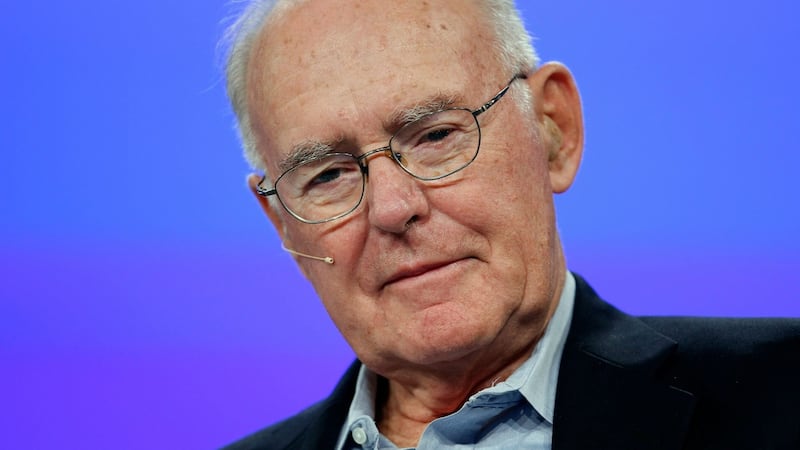When Brian Krzanich took over the top job at Intel, he had a simple message. The US chipmaker was the clear leader in the world's most demanding manufacturing industry. After a career of more than 30 years spent in operations, the new chief executive vowed to double down on a lead that he saw as Intel's main competitive advantage.
Five years on, however, that manufacturing leadership has come into question for the first time since Intel rose to dominate the semiconductor industry in the 1980s - and Mr Krzanich is out.
The two are completely unrelated, if the company is to be believed. Mr Krzanich had a consensual relationship with an unnamed Intel employee, contravening a policy in place since 2011 that forbids managers from “fraternising” – the company’s word – with anyone who either directly or indirectly reports to them.
Policy
Corporate governance experts backed the company’s zero-tolerance policy on Thursday, supporting the board’s decision to apply its ethical rules at all levels of the company, regardless of rank.
But the slip in manufacturing that has occurred on Mr Krzanich's watch has left his successor with a headache. Intel has led the chip industry for years by being the first company to reach each new generation of microprocessor technology, shrinking the feature size on its chips faster than the competition. That enabled it to pack more processing power into less space and surf the wave of Moore's Law – the prediction, by Intel co-founder Gordon Moore, that chips would get progressively smaller and more powerful.
The extent of the slip was evident earlier this year, when Intel warned that its first 10 nanometre chips – originally due by the end of 2016 – would not hit volume production until late in 2019.
Mr Krzanich once predicted that Intel’s old two-year cadence for shrinking chip feature sizes would probably stretch out another six months as it hit new challenges manufacturing at such minute scale. But by the time its 10nm chips reach the market, the gap will have widened to more than five years.
“Intel was on a roll for years – in hindsight, they took too much risk” by setting over-ambitious manufacturing goals, said Patrick Moorhead, a chip analyst at Moor Insights & Strategy.
The company's slip has contributed to the new lease of life being enjoyed by AMD, the perennial also-ran in a PC and server chip market dominated by Intel. By outsourcing its manufacturing to TSMC, a Taiwanese group that makes chips on order for outside groups, AMD may stand to take a slice out of its bigger rival's market share in the data centre market. Intel's latest manufacturing headaches have contributed to a 60 per cent bounce in AMD's shares since April.
Consternation
That helps to account for the lack of consternation on Wall Street at the news of Mr Krzanich's abrupt departure. He had been credited with pushing the company faster beyond the mature PC market, partly through acquisitions. These included the $16.7 billion purchase of Altera, whose products are used in artificial intelligence, and the $15.3 bilion (€13.13 billion) acquisition of Mobileye, the Israeli driverless technology company.

But while this has given it a stake in more of the industry's most promising growth markets – including 5G mobile communications, driverless cars, machine learning and the internet of things – Intel still has a long way to go to challenge companies such as Nvidia in AI and Qualcomm in mobile.
Analysts at Barclays summed up the mood. In a note to investors on Thursday, they said that the departure, though unplanned, could still be a "a good transition point" for Intel as it looks to hone its position in the next giant chip markets, working out where to push harder and where to retreat.
“I don’t think all of these have to hit – but some of them do,” said Mr Moorhead.
Despite the manufacturing delays, however, Mr Krzanich has left Intel in robust financial health. The company is enjoying strong growth from the data centre market – where its chip architecture, originally created for PCs, is also the foundation for most servers. Intel combined news of its CEO’s ouster with a bullish forecast for second-quarter earnings, lessening some of the shock.
Stronger cost discipline under Bob Swan, brought in as chief financial officer from eBay in 2016, has also helped. That has contributed a strong rally in Intel's shares since last autumn, after a period in which the company's investors had missed out on a powerful stock price boom for other chip companies. Mr Swan was named interim CEO on Thursday.
Intel said it would look beyond the company for its next CEO, as well as consider internal candidates, potentially pointing to the first outside leader in its 50-year history.
Bets
The large number of bets on new markets placed by Mr Krzanich makes it unlikely the company will turn outside for a visionary leader to set a new direction, said Mr Moorhead. The challenge now is to refine its current strategy, not pick an entirely new one. That is a job better suited an insider, he said.
Coming soon after extensive executive changes set in motion by Mr Krzanich, however, the search for a successor has come at an inconvenient time.
The list of internal candidates is headed by executives such as Navin Shenoy, who was appointed head of the company’s important data centre group only last year, and Venkata Renduchintala, who joined three years ago from Qualcomm and is now head of the PC group and chief engineering officer.
If Intel’s board follows through on its usual practice of promoting from within, one of these two could soon become the inheritor of one of the chip industry’s most famous crowns.
Copyright The Financial Times Limited 2018















